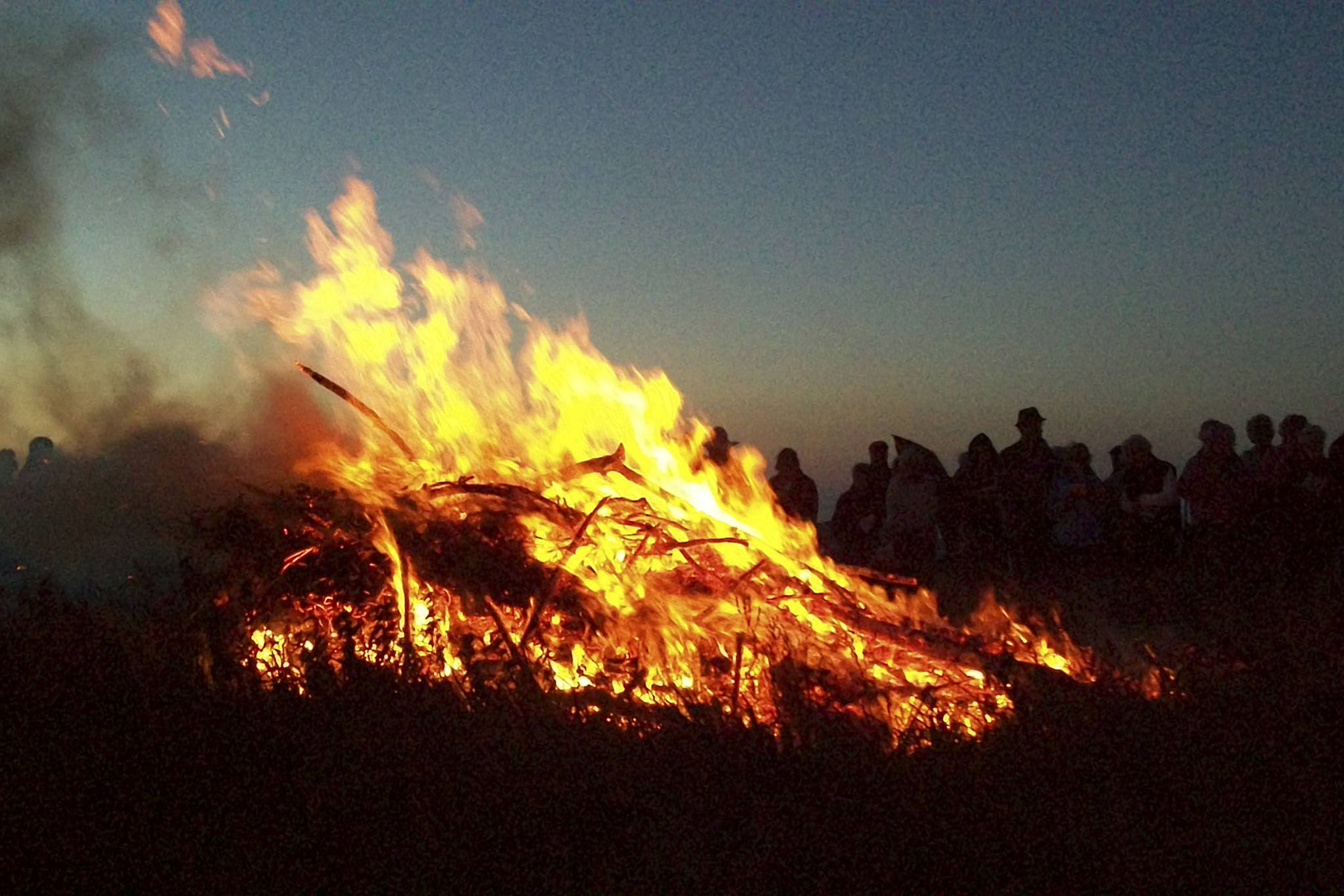Summer, and the summer solstice, are nearly here. If you live in the Pacific Northwest, I’ll forgive you if you don’t believe me. Starting last fall, we’ve had more rain than since, well, ever. According to the National Weather Service, this is the wettest October-to-June stretch on record. But perhaps that makes this particular witch’s sabbath all the more important.
Also called Midsummer or Litha, the summer solstice marks the high point of the sun’s arc across the sky in the Northern Hemisphere. We are treated to the longest days and the shortest nights of the year. Around June 19 to 21, it will rise and set at the same point on the horizon three-ish days in a row, hence the word “solstice,” which we get from sōlstitium, a phrase that is part Middle English, part old French and part Latin. It means, loosely, “sun” (sōl) and “to stand still” (stitium).
For some pagans, like the Celts, this was a lesser holy day. The Celts were a mostly pastoral society, much more concerned with the rhythms of animal mating cycles. The minutiae of the sun’s movements were nearly inconsequential to them. But for societies like Scandinavian heathens and Teutonic pagans, who were agrarian, every subtle change was tracked as closely as possible. Miscount the days of the sun’s course, and your entire crop could be in jeopardy.
Even though the heat of summer, such as the “dog days” of August, are still yet to come, witches, pagans, and followers of many other traditions consider this day and the season it inducts to be the zenith of their sun deity’s potential. Whether this is a god, like the Aztec Huitzilopochtli, Mithra from Persia, or the Canaanite Ba’al, or a goddess, like Amaterasu from Japan or Sekhmet from ancient Egypt, many of these deities come into their power now. According to their archetype, they do this by either passing a test or by killing off their predecessor and taking their force into themselves.
In the Western witchcraft traditions, the “god” idea is often divided into two forms; the Holly King and the Oak King. At the summer solstice, the Holly King fights and kills the Oak King, ruling over the waning year until they meet again at the winter solstice, weaving back and forth forever. And what they are fighting for is the love of (or the opportunity to knock boots with) the Goddess, who is eternal. That’s why we see holy weddings taking place at this time of year, like Isis and Osiris, and Orpheus and Euridice. We also see the Jewish holy day of Shavuot in this season, a day celebrating the marriage of Israel to the Abrahamic God.
Themes of water and fire permeate this season. And while this is certainly a time to focus on all the solar and fire deities, many of the great water deities, like Oshun, the massive ocean goddess from Nigerian Yoruba, and Cerridwen and her overflowing cauldron from Welsh mythos, also have their holy days at this time of year.
All of this is reflected very nicely in our astrological myths that have come down to us from the very ancient past. Gemini, the sign that rules over the end of spring, is the sign of the twins and the union of opposites, illustrated in the myth of Castor and Pollux. Then comes Cancer, a nurturing water sign, followed by Leo, a leadership-oriented fire sign. We see a beautiful example of this metaphor in the relationship between John the Baptist and Jesus. June 24 is St. John’s Day in the Catholic Church, and December 24 is Christmas, the Mass of Christ. Perhaps this relationship is a version of the witch’s Holly King and Oak King (though there is a long discussion to be had about which group adopted the idea first), with John the Baptist coming first to purify souls with water and Jesus Christ coming later to purify souls with fire.
Modern peoples around the world still recognize this day as a point of reverence. Eating, drinking, and making merry are all acceptable forms of worship. So is going skyclad—or naked—in your rites, if at all possible, and letting your body revel in the warmth of the sun. Many Renaissance-era witches would wander through their gardens and fields naked, “leaping on their broomsticks” to encourage the crops to grow as high as they jumped. Getting handfasted or married is also appropriate. If you can’t start a giant bonfire on top of a hill as your ancestors may have done, keeping a candle burning for the 24 hours of the solstice will do nicely.
But if you wanna be a real badass, take a giant wooden wheel, wrap it in heather and straw, set it on fire, and roll it down the biggest hill you can find. In Seattle, the steepest hill we have is East Roy Street. I hope the nice people of Madison Park are ready for some old-time religion.
Meagan Angus presents The Wheel of the Year Series: Litha / Summer Solstice. The Vajra on 10th, 1423 10th Ave, Studio 9. www.meaganangus.com. $25, $35 day of. All Ages. 1 p.m. Sat., June 17.








